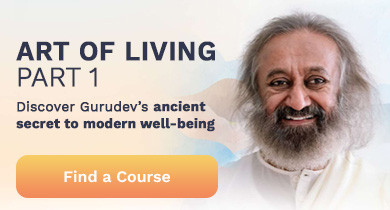
Breathing has become a hot topic! How we breathe matters more than we could have ever known. Breathing deeply, breathing to a count, and even breathing from specific parts of your body all make a difference in your physical and mental well-being.
Belly breathing, sometimes referred to as diaphragmatic breathing, is at the forefront of this breathwork bandwagon. Doctors and yoga instructors agree that breathing from your belly is a great way to relax and reduce stress.
Read on to learn more about belly breathing benefits and how to breathe from your diaphragm.
Is belly breathing good for you?
Have you ever noticed how a young child breathes? Their bellies naturally expand with nearly every breath. But if you are female you may have been told as a little girl you must hold in your tummy at all times!
Add modern-day stresses and anxiety and we ALL start shallow breathing from our chests.
Without deep breaths, our health and mental well-being decline.
Here are some of the many benefits of belly breathing.
- Reduced heart rate and blood pressure
- Increased oxygen levels
- Strengthened diaphragm
- Less effort and energy to breathe
- Lower anxiety levels
- Improved COPD symptoms
- Reduced asthma
- Lower stress levels
- Improved core muscle stability
It’s no wonder so many people are trying belly breathing in their search for relaxation techniques!
Diaphragmatic breathing exercises
There are several types of exercises called belly breathing that are also considered diaphragmatic breathing.
Some examples include 4-7-8 breathing, stage one of three stage breathing (as taught through the Art of Living Foundation), abdominal breathing, and full yogic breath.
With deep breathing, your diaphragm contracts, your rib cage expands, and normal breathing turns into a breathing exercise.
How to practice belly breathing
Preliminary considerations:
If you are a beginner, start in a lying-down position with knees bent.
If you have chronic obstructive pulmonary disease (COPD) or asthma, start out slow and easy as you would with any new exercise routine.
Below is the basic step-by-step process for diaphragmatic breathing.
- Sit or lie down straight on a comfortable, flat surface.
- Keep your shoulders and neck relaxed by gently rolling them a couple of times, and take a few deep breaths.
- Put one hand on your upper chest and the other hand on your belly.
- Take a long, full, deep breath in through your nose and fill up your lungs completely
- As the lungs get filled, your abdominal muscles and sides of the waist expand and your hand gently rises. Your chest remains relatively still.
- Exhale slowly. The hand that is resting on your belly will gently come back to its original position.
- Repeat these steps 5-15 times for the best results.
You can also watch this video by the American Lung Association for simple instructions on how to practice diaphragmatic breathing.
Enhancements to use when practicing diaphragmatic breathing:
On your exhalation, instead of breathing out through your nose, exhale through the mouth with pursed lips as if you have an invisible straw in your mouth.
Add a count where you breathe in and hold your breath for the same amount of time and exhale longer for two to four additional counts. For example, slowly breathe in to a count of four, hold for four, and exhale to a count of six. Deep breathing with longer exhalations means more relaxation.
Beyond breathing exercises
The breathwork bandwagon is a great ride! But you should also know about an amazing breathing practice cognized by a master of meditation, Gurudev Sri Sri Ravi Shankar, called SKY Breath Meditation.
Working with the natural rhythms of your breath, SKY goes way beyond any ordinary breathing technique and takes you to the door of deep meditation.
Art of Living’s SKY course also includes the three-stage breathing technique mentioned earlier.
What else besides deep meditation can you look forward to with SKY practice? SKY breathing can help:
- Significantly decrease clinical/non-clinical anxiety and depression
- Improve blood pressure
- Strengthen interpersonal relationships
- Improve immune system function
- Enhance deep sleep
- Give greater mental focus
- Improve respiratory function
- Reduce addictive behaviors and PTSD symptoms
- Increase self-esteem, joy, optimism, and life satisfaction
Curious to know more about SKY Breath Meditation? Attend our free introductory session online led by a certified instructor. The instructor will also teach you one of the best deep breathing exercises, bellows breath, while you learn more about SKY. Click on the image below to choose a convenient time.
You might also enjoy reading How to Breathe Better, Feel Better, and Live Better.




























